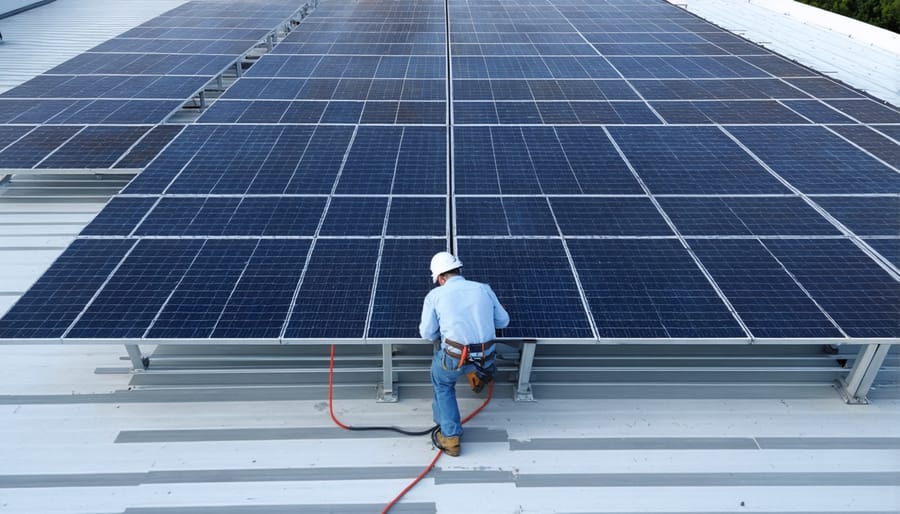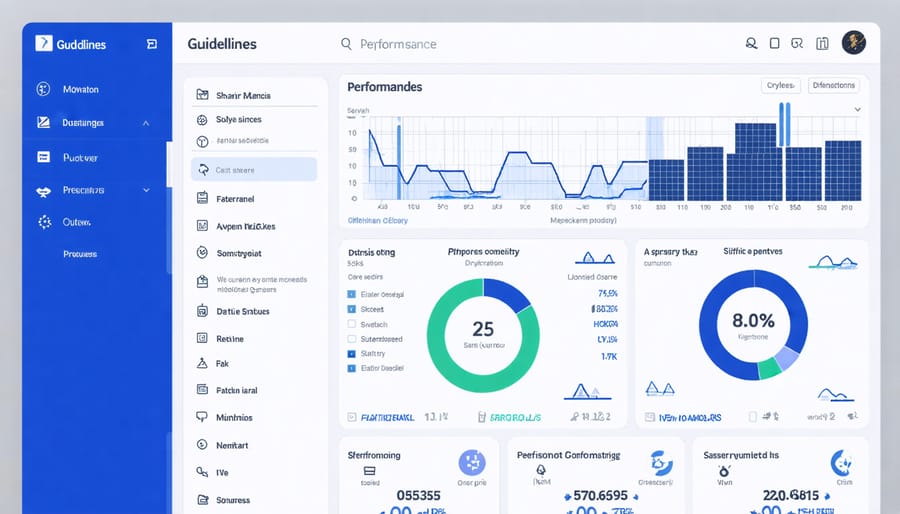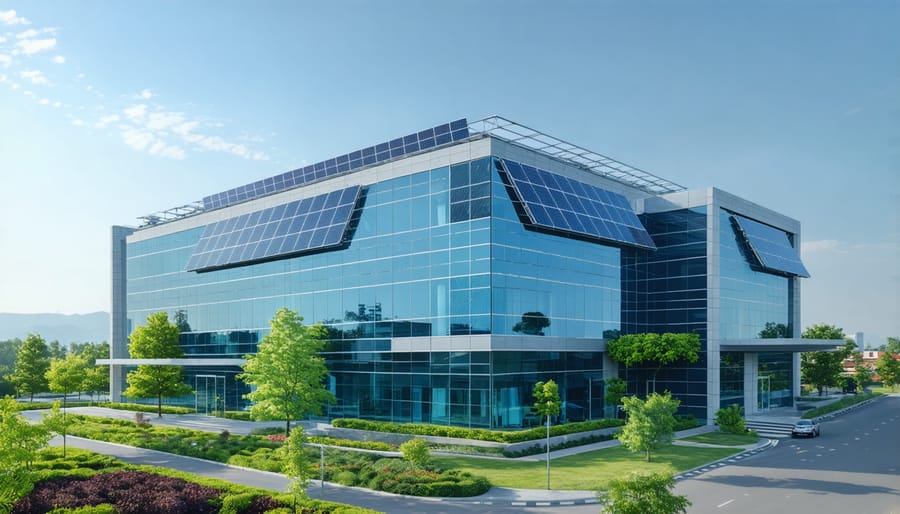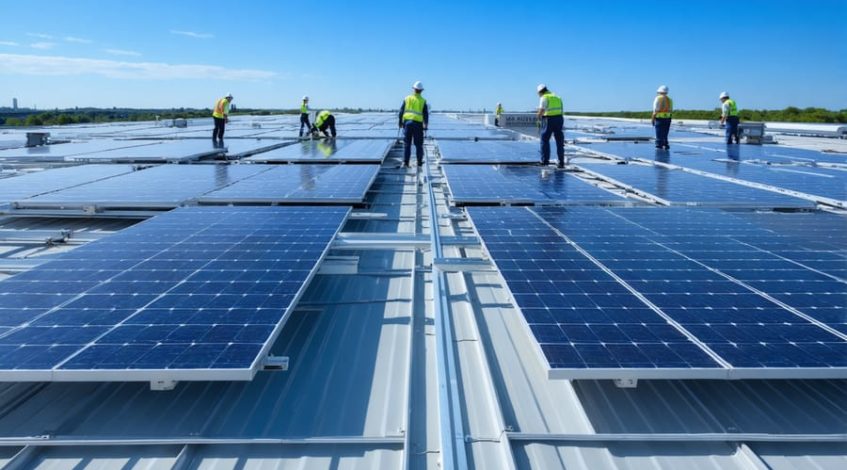As businesses and organizations face mounting energy costs and environmental pressures, solar energy for businesses has emerged as a transformative solution that delivers both economic and environmental returns. The advantages of solar power extend far beyond simple cost savings, offering organizations a strategic pathway to energy independence, operational resilience, and sustainable growth. From reducing operational expenses to enhancing corporate sustainability credentials, solar energy systems represent a proven investment that continues to deliver value through technological advancement and increased efficiency. As we examine the five key advantages of solar energy implementation, decision-makers will discover how this renewable resource can drive business success while contributing to a more sustainable future. This analysis focuses on tangible benefits backed by real-world performance data and industry expertise, providing a clear framework for evaluating solar energy’s potential impact on your organization.

Substantial Cost Reduction Through Expert Implementation
Long-term Operating Cost Benefits
Solar energy systems deliver substantial long-term financial benefits through significantly reduced operational costs. After the initial investment, businesses can maximize solar cost savings with minimal ongoing expenses. A well-maintained solar installation typically reduces electricity bills by 50-90%, depending on system size and local energy rates.
The durability of modern solar panels, with warranties extending up to 25 years, ensures predictable energy costs for decades. Unlike traditional energy sources subject to market volatility, solar power provides stable, forecasted expenses that facilitate better business planning. Maintenance requirements are minimal, usually limited to annual inspections and occasional cleaning, representing less than 1% of the system’s total cost annually.
Real-world data from commercial installations demonstrates average payback periods of 3-7 years, after which organizations enjoy virtually free electricity generation. Factoring in protection against rising utility rates, which historically increase 2-3% annually, the long-term cost advantages become even more pronounced. This predictability in energy expenses allows organizations to allocate resources more effectively and maintain competitive advantages in their respective markets.
Available Tax Incentives and Rebates
Professional solar installations qualify for numerous financial incentives that significantly reduce initial investment costs and accelerate return on investment. The federal Investment Tax Credit (ITC) allows businesses to deduct 30% of their solar installation costs from their federal taxes. Many states offer additional tax credits, ranging from 10% to 25% of system costs, alongside property tax exemptions for solar improvements.
Performance-based incentives, such as Solar Renewable Energy Credits (SRECs), provide ongoing revenue streams based on the amount of energy your system generates. Local utilities often offer rebate programs that can cover up to 20% of installation costs, while some municipalities provide grants and low-interest financing options specifically for commercial solar projects.
Accelerated depreciation through the Modified Accelerated Cost Recovery System (MACRS) enables businesses to recover their solar investment through tax deductions over just five years. Combined with net metering programs, which credit excess energy production at retail rates, these incentives can reduce payback periods to 3-7 years while providing decades of clean energy benefits.
Enhanced System Performance and Reliability
Advanced Monitoring and Maintenance
Modern solar energy systems incorporate sophisticated monitoring technologies that enable real-time performance tracking and predictive maintenance capabilities. These advanced systems utilize IoT sensors and data analytics to continuously assess energy production, detect potential issues, and optimize system efficiency. Professional monitoring services can identify underperforming panels, inverter malfunctions, or connection problems before they significantly impact energy generation.
Preventive maintenance programs, typically conducted quarterly or bi-annually, ensure optimal system performance and longevity. These programs include thorough panel cleaning, wiring inspections, and structural integrity assessments. Many providers now offer remote monitoring solutions that alert facility managers to maintenance needs through mobile applications or web-based dashboards.
Organizations implementing comprehensive monitoring and maintenance strategies report up to 20% higher system efficiency and significantly reduced downtime. For example, a commercial facility in Arizona increased its annual energy production by 15% after implementing an AI-driven monitoring system combined with regular professional maintenance.

Quality Assurance Standards
Solar energy installations must adhere to rigorous quality standards and certifications to ensure optimal performance and reliability. The International Organization for Standardization (ISO) 9001 certification serves as a cornerstone for quality management in solar manufacturing and installation processes. Additionally, UL certification validates the safety and performance of photovoltaic components, while IEC standards ensure global compliance and interoperability.
Leading solar providers maintain strict quality control through comprehensive testing protocols, including flash testing for module performance, electroluminescence imaging for cell integrity, and thermal cycling for durability assessment. These measures are complemented by regular third-party inspections and performance monitoring systems that track energy production and system efficiency.
For business implementations, the Solar Energy Industries Association (SEIA) provides detailed installation best practices, while the Clean Energy Council offers accreditation programs for installers. These standards not only protect your investment but also optimize system performance and enhance long-term reliability, ultimately maximizing return on investment through consistent energy production and reduced maintenance needs.
Regulatory Compliance and Risk Management
Professional solar energy implementation requires strict adherence to regulatory requirements and comprehensive risk management protocols. Skilled professionals in the solar industry ensure that installations meet all local, state, and federal regulations while implementing robust safety measures throughout the project lifecycle.
These experts navigate complex permitting processes, conduct thorough site assessments, and ensure compliance with building codes and electrical standards. They maintain detailed documentation of safety protocols, equipment specifications, and maintenance procedures, which is crucial for both regulatory compliance and risk mitigation.
Risk management in solar energy systems encompasses multiple aspects, including structural integrity assessments, electrical safety protocols, and environmental impact considerations. Qualified professionals conduct regular system audits, implement preventive maintenance schedules, and monitor performance metrics to identify potential issues before they become significant problems.
Insurance requirements and liability considerations are also expertly managed by these professionals. They work closely with insurance providers to ensure appropriate coverage levels and maintain necessary certifications and documentation. This comprehensive approach to risk management helps protect both the system owner’s investment and the facility’s operations.
Furthermore, skilled professionals stay current with evolving regulations and industry standards through continuous education and certification programs. They implement best practices for cybersecurity measures to protect smart monitoring systems and maintain data privacy compliance.
By leveraging professional expertise in regulatory compliance and risk management, organizations can confidently deploy solar energy solutions while minimizing potential liabilities and ensuring long-term system reliability. This systematic approach to compliance and risk management is fundamental to achieving optimal returns on solar energy investments.

Environmental Leadership and Brand Value
In today’s environmentally conscious marketplace, adopting solar energy positions organizations as forward-thinking environmental stewards, significantly enhancing their brand value and competitive advantage. Companies that implement solar solutions demonstrate a tangible commitment to sustainability, which resonates strongly with modern consumers and stakeholders who increasingly prioritize environmental responsibility in their decision-making processes.
Research shows that businesses with visible solar installations experience improved public perception and customer loyalty. For example, major retailers who have adopted solar energy report up to 20% higher customer satisfaction scores when their environmental initiatives are prominently displayed. This enhanced reputation often translates into increased market share and stronger business relationships.
Solar adoption also helps organizations meet increasingly stringent Environmental, Social, and Governance (ESG) criteria, which have become crucial factors for investors and business partners. Companies with robust environmental initiatives typically score higher in sustainability rankings, leading to better access to capital and preferred partner status in supply chains.
The competitive advantages extend beyond reputation. Organizations that demonstrate environmental leadership through solar adoption often gain preferential treatment in government contracts and qualify for additional incentives. They also attract and retain top talent more effectively, as employees increasingly seek to work for environmentally responsible employers.
Moreover, solar implementation serves as a visible symbol of innovation and long-term thinking, positioning organizations as industry leaders rather than followers. This leadership stance creates positive media coverage opportunities and strengthens community relations, providing a compound effect on brand value that extends well beyond the direct benefits of renewable energy generation.
Future-Proofing Your Energy Infrastructure
Solar energy infrastructure stands as one of the most adaptable and scalable energy solutions available today. As technology continues to evolve, solar installations can be readily upgraded and expanded to meet growing energy demands. This flexibility allows organizations to start with a modest installation and gradually increase capacity as needs change or budgets allow.
The modular nature of solar systems enables seamless integration with emerging technologies. Advanced energy storage solutions, smart grid capabilities, and improved inverter technologies can be incorporated into existing solar installations without requiring a complete system overhaul. This adaptability ensures that initial investments remain valuable while allowing organizations to leverage new innovations as they become available.
Smart monitoring systems and predictive maintenance technologies are increasingly becoming standard features in solar installations. These technologies optimize system performance and extend equipment lifespan through real-time data analysis and automated maintenance scheduling. Organizations can remotely monitor performance metrics, identify potential issues before they become problems, and maximize their return on investment.
Furthermore, solar infrastructure supports the integration of electric vehicle charging stations, microgrids, and other sustainable technologies. This compatibility positions organizations to capitalize on future energy management opportunities while maintaining operational efficiency. The scalability of solar systems also allows for strategic planning of energy resources, ensuring that infrastructure investments align with long-term organizational growth and sustainability goals.
Recent industry developments indicate that solar panel efficiency and energy storage capabilities continue to improve, making future upgrades increasingly cost-effective and performance-enhancing.
Solar energy represents a transformative opportunity for businesses seeking sustainable, cost-effective power solutions. The advantages are clear: substantial long-term cost savings, environmental stewardship, energy independence, enhanced property value, and reliable performance backed by advanced technology. By investing in solar energy today, organizations position themselves at the forefront of the clean energy revolution while securing predictable energy costs for decades to come. The time to act is now – with federal incentives, improving technology, and increasing grid instability, solar power offers an intelligent business solution that delivers both immediate and long-term returns. Contact a qualified solar provider to assess your facility’s potential and develop a customized implementation strategy that aligns with your organization’s energy goals and financial objectives.

